Helping VT Firms Make the 2030 Commitment
By members of the AIAVT COTE Committee: Matt Bushey, AIA and Megan Nedzinski, AIA
Climate issues have received even greater attention over the past year, and this has brought renewed interest in the AIA 2030 Commitment.
The AIA 2030 Commitment is a program promoted by the AIA to encourage and help architecture firms nationwide achieve carbon neutral buildings by the year 2030. It provides a framework by which firms can measure the projected performance of their projects and report progress toward achieving a carbon-neutral portfolio.
To date, nine Vermont architecture firms have signed on to the AIA 2030 Commitment, and approximately 750 firms nationwide.The directory of signatory firms can be found here.
Here in Vermont, the stepped goals of the AIA 2030 Commitment complement the anticipated changes to the Vermont Energy code. Firms may find that the actions they take – and the knowledge they gain - to meet the energy goals of the 2030 Commitment will prepare them for the more stringent energy codes that are scheduled to roll out over the coming years.
MAKING THE COMMITMENT AND SIGNING ON
Once a firm signs on to the AIA 2030 Commitment, the first step is to develop a Sustainability Action Plan (SAP). This is a document that establishes the firm’s goals and lays out the steps they will take to achieve those goals. Some of the suggested content areas for a Sustainability Action Plan are: staff training & education; design process & reporting; office operations; and communications & outreach.
At TruexCullins, the firm decided to use their Sustainability Action Plan as a marketing tool, in addition to its role as an internal document for the design team. The TruexCullins Action Plan communicates their energy goals with current and potential clients, and highlights the steps they are taking in hopes that it will inspire clients to support high performing building projects.
The firm also found that the process of developing their Action Plan motivated and engaged many of their staff, something that has proven to be especially welcome during these days of remote working.
When the idea was initially introduced to the firm, about a half dozen people stepped up and a small committee was formed. By matching people’s interests to different aspects of the plan, the team collectively created an Action Plan over the course of about 3 months, and began mapping out a process for implementation. The TruexCullins Sustainability Action Plan was recently released, timed to coordinate with the 50th anniversary of Earth Day, and is available for download from the firm’s website here.
THE DESIGN DATA EXCHANGE (DDx)
Once a firm’s Sustainability Action Plan is in place, the AIA requests that firms report energy data for their projects each year. The AIA uses Projected Energy Use Intensity (pEUI) to measure architecture projects and Lighting Power Density (LPD) to measure interior-only projects. Gathering data nationwide, the AIA then publishes an annual report that tracks the industry’s progress toward the 2030 goals.
Upon signing up for the AIA 2030 Commitment, firms gain access to the AIA Design Data Exchange (DDx), a confidential, members-only website where firms can enter project data and compare project performance.
The DDx offers an opportunity to quickly assess how projects are doing alongside one another and alongside those of similar type, scale and use elsewhere in the state, region, and nation. Specific project information is kept confidential. The DDx has proven to be a helpful tool for firms in reviewing and analyzing portfolio-wide performance and for setting specific goals for improvement.
REPORTING
At first glance, the reporting aspect of the 2030 Commitment may feel a little daunting. For some firms that are considering signing on, it may even be the reason to avoid doing so. While data collection and input does require a time commitment, many reporting firms have found that the time required isn’t prohibitive and that the modest investment yields some powerful insights into a firm’s collective body of work.
WHAT TO REPORT:
Participating firms should report on their full portfolios annually. Reporting requirements include any project whose scope included modifications to the envelope or HVAC systems and was actively in design or construction during the year. Interiors projects in design or construction that include lighting modifications should also be reported. While the DDx is broad enough to collect and analyze a variety of project information, participation requires just a few data fields for each project:
- Project name
- Category (residential, non-residential, interior only)
- Construction type (new construction or major renovation)
- Location (city, state, country, zip code)
- Year of occupancy
- Current project phase
- Any target certifications
- Use type (i.e. library, office, restaurant, etc)
- Gross square footage
- Baseline/design energy code
- Whether the building was energy modeled, and if so, the tool and the determined pEUI.
A list of all potential inputs can be found here.
If you’re just starting out, keep it simple. Try reporting just the minimum required fields the first year. Then as you establish a system, assess your current performance against your firm’s specific SAP goals and identify which additional data inputs will give a more complete picture of your progress.
Again, the key to success is to get started – start small and get going!
TIPS FOR SUCCESS:
Vermont Integrated Architecture, PC has developed a few helpful strategies for firm-wide project reporting and offers the following tips:
- Identify a “2030 champion” to keep you on target
- It is helpful to have someone who acts as your point person or “champion” for the process. This person can stay current with any updates and communications from AIA national’s 2030 Commitment team and disseminate critical information to the wider team. In addition, this person can keep the team on track with reporting deadlines, act as the liaison for any specific questions, and ensure consistency of reporting across the firm’s portfolio.
- Educate and empower the team
- The SAP that you authored together lays the groundwork and helps establish collective buy-in from the group. Different members of your team are likely to have varying degrees of experience with the metrics, terms, and targets associated with this work. Set aside some time with the full team to share an overview about the 2030 commitment, remind them of the firm’s goals and why it’s important to track the information, and field questions about the process. Lean on your SAP as a helpful reference tool along the way to continue to highlight your key goals and strategies for achieving them.
- Engage the group/Solicit help
- As noted above, start small. One strategy is to create a central list where Project Managers (PM) can record and update the required data for each of their projects at the completion of each design phase. The “2030 champion” can periodically check in with PMs to address questions and monitor progress. From there the “2030 champion” can work to input the collected data in batches into the DDx. If there is a sizable number of projects to report, the “champion” may want to solicit help for data entry. In general, limiting the number of responsible parties directly inputting data into the DDx is a good idea.
- Keep it going
- Setting several milestones throughout the year for routine check-ins with PMs and batch inputs into the DDx can prevent a deadline crunch. The central list noted above allows the team to include their information throughout the year whenever it is convenient. The central list also allows each PM to make ongoing updates as the projects move through the various phases of design. Additionally, it allows the person responsible for inputting the data into the DDx to work in batches and therefore be more efficient (5-10 mins or less per project is a reasonable expectation).
- Transparency and celebrating your collective wins!
- The DDx has built-in tools that easily allow you to create custom scatter plot graphs to show your portfolio progress over time and relative to other projects in your area of a similar scale, type, or use. Sharing the progress of your on-going efforts with the team can be really powerful for understanding how your work is progressing and where improvement is needed. Some firms have even created internal challenges between studios to create some friendly competition. Consider how you and your team might together celebrate your collective wins! And finally, share that progress with your clients and the public to illustrate your commitment to a more sustainable future.
While the breadth of data collected and the depth of information analyzed in the DDx may vary widely from firm to firm, the DDx offers a platform to quickly and effectively review architectural portfolio performance. Many firms also find value in the ability to anonymously evaluate their portfolio performance across the industry so that together we can achieve carbon neutral by 2030.
Please help AIAVT's COTE Committee serve our members by taking a short survey here:







